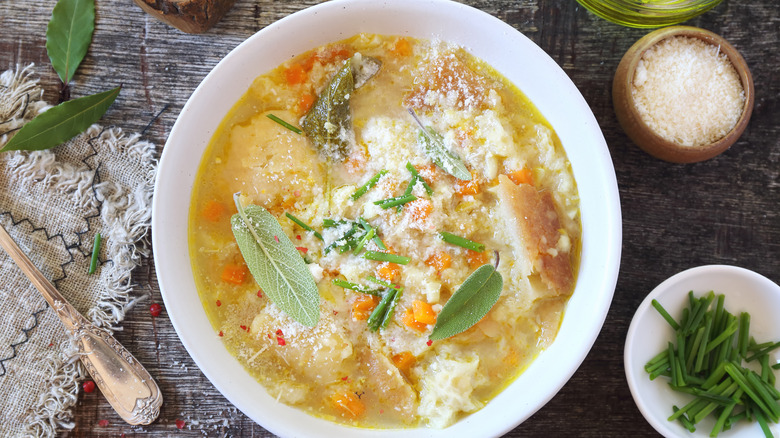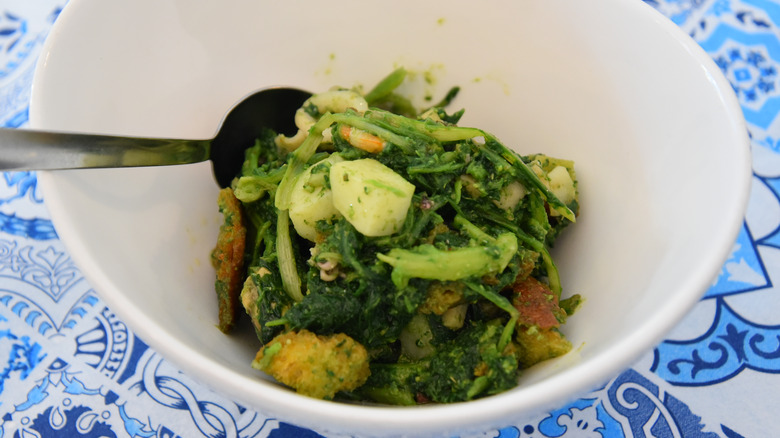Pancotto Is The Italian Soup That Features Bread As The Star Ingredient
No matter the season, soup is always a good idea when you're in the mood for a big bowl of something warm and comforting. Since we'd argue that there's nothing more comforting than carbs, let us introduce you to pancotto, an Italian soup made from bread. A budget-friendly and waste-free recipe, pancotto is not the most glamorous of dishes. But, what it lacks in aesthetics, it more than makes up for in flavor.
Translating to "cooked bread," pancotto has origins that extend back centuries. In fact, the first recorded documentation of the recipe was written by Apicius in "De re coquinaria," where the Roman gourmet alludes to a similar dish made from crushed and boiled cereals called puls tractogalata that was meant for weaning children. Naturally, this recipe evolved with the passage of time, but its essence of simplicity remains the same to this day.
A prime example of cucina povera, pancotto is a humble dish that works to repurpose kitchen scraps into something uniquely delicious. At its core, the recipe consists of cooking torn pieces of stale bread in water, all before dressing the softened starch with a drizzle of olive oil, cheese, salt, and pepper. The result is a warm and satisfying soup-like dish that's full of gustatory depth. Using leftover bread as a template, pancotto can also be elevated in a multitude of ways, as well.
No two pancotto recipes are quite the same
Over the years, pancotto has diffused across Italy, each region boasting its own rendition that varies in its complexity. In the north, recipes tend to be fairly basic, and such is the case with pancot maridà from Lombardy, which involves boiling bread in beef stock and seasoning it with warm spices and grated cheese. Moving further south, any number of ingredients can be added. For example, in Emilia Romagna, eggs and butter bulk up the soup, whereas a Tuscan spin-off of pancotto called pappa al pomodoro soaks bread in saucy tomatoes. Abruzzo instead includes turnip tops, while Molise adds potatoes. Calabrian panicottu even incorporates fiery 'nduja and a sprinkle of chilis.
Additionally, there are differences in how the bread is cooked. Northern versions tend to cook bread down into a creamy purée, evident in renditions like the fennel and cheese-laced Friulian panada, whereas further south in Puglia, the bread is soaked just briefly. But, sometimes even the type of bread can vary. Many recipes opt for fluffier loaves of bread, in Sardinia, pane frattau is made with a cracker-like flatbread called pane carasau that's softened slightly in water before being topped with sauce, cheese, and a poached egg. Regardless of which recipe speaks to you, pancotto will always feel like a warm hug. Take as many creative liberties as you wish and whip up your own recipe — all you need is stale bread and a touch of imagination!

